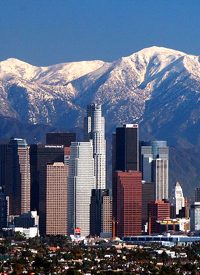
The census is far from complete, but projections already show the historic pattern of people moving out of the Northeast and into the South and the Rocky Mountain states. This flow has historically been attributed to climate, cheap land, the movement of jobs, and related factors. Maybe. But in this census, for the first time ever, California will not gain at least one seat in the House of Representatives. The climate is still wonderful, the oceans and mountains are still near, and soil is still some of the richest on Earth.
Might there be hidden factors which drive population flow? There are hints this may be the case. Twenty-two states of the Union have right to work laws, only 44 percent of the states. Yet nine out of the top 10 states in population growth had right to work laws. Ninety percent of the fast-growing states barred union shops, yet less than half the total number states bar union shops. That indicates some sort of correlation.
The per capita state tax burden in America ranges from a high of $3,050 in Hawaii to $1,938 in Texas. Does this state tax burden impact migration into a state? Census Bureau data may indicate that. Out of the top 10 fastest-growing states, nine out of 10 come from the bottom 25 states with the lowest per capita state tax burden. Only Nevada, with the 23rd highest per capita state tax burden, was not in the bottom half.
Do people move to states because of the school systems? Perhaps, but it does not appear that the quality of a public school system rests on how many tax dollars are spent per capita. According to the National Center for Educational Statistics, out of the top 10 fastest-growing states, only two — Texas and Georgia — ranked above average in per capita public education expenditures. Texas ranked 19th in the nation and Georgia ranked 25th in the nation. More interesting, perhaps, is that five of the seven states that spent the least on public education — North Carolina, Arizona, Utah, Nevada, and Florida — were almost among the 10-fastest growing states.
People in the 10-fastest growing states are also more religious than people in the other 40 states, according to a Gallup Poll. Three out of the top ten most religious states — North Carolina, South Carolina, and Georgia — are also among the ten fastest growing states. Six of the 10 fastest-growing states are more religious than the rest of the nation. The same is true in a separate study by Gallup of church attendance by state. Four out of the 10 states with the highest church attendance — South Carolina, Utah, North Carolina, and Georgia — were also among the 10 fastest-growing states.
The census is not complete, but the preliminary indications are that people are voting with their feet. States without rogue labor unions, with law tax burdens, with public schools that do not gobble up state budgets, and with people who take their religious faith seriously are the states in which people want to live.
Photo: LA skyline



